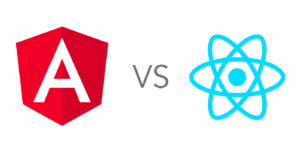Integrating React with GraphQL and Apollo Client is a powerful combination for building modern, data-driven web applications. GraphQL provides a flexible query language for APIs, while Apollo Client acts as a state management library for managing local and remote data. Together, they make handling data in React applications more efficient and enjoyable. In this article, we’ll explore how to use React with GraphQL and Apollo Client, complete with examples to get you started.
What is GraphQL?
GraphQL is a query language for APIs that was developed by Facebook. Unlike REST, where you must make multiple requests to different endpoints, GraphQL allows you to request exactly the data you need in a single query. This reduces the amount of data transferred over the network and makes your application faster.
What is Apollo Client?
Apollo Client is a comprehensive state management library for JavaScript apps. It helps you manage both local and remote data with GraphQL, providing a robust client-side data management solution. Apollo Client works seamlessly with React, allowing you to query your GraphQL server and cache the results locally.
Setting Up React with Apollo Client
To get started with React and Apollo Client, you’ll first need to install the necessary packages. Here’s how you can set up a basic React application with Apollo Client.
Step 1: Install Dependencies
You’ll need to install the following packages:
npm install @apollo/client graphql
@apollo/client: The official Apollo Client package.graphql: A JavaScript implementation of the GraphQL query language.
Step 2: Set Up Apollo Client
Once you’ve installed the dependencies, you can set up Apollo Client in your React application. Here’s an example:
import React from 'react';
import ReactDOM from 'react-dom';
import {
ApolloClient,
InMemoryCache,
ApolloProvider,
useQuery,
gql
} from '@apollo/client';
const client = new ApolloClient({
uri: 'https://your-graphql-endpoint.com/graphql',
cache: new InMemoryCache()
});
function App() {
return (
<ApolloProvider client={client}>
<YourComponent />
</ApolloProvider>
);
}
ReactDOM.render(<App />, document.getElementById('root'));
ApolloClient: This is the core of Apollo Client. It connects your React app to your GraphQL server.InMemoryCache: Apollo Client’s built-in cache, which helps manage your app’s local state.ApolloProvider: Similar to React’sContext.Provider, it provides the Apollo Client instance to your React app.
Fetching Data with Apollo Client
To fetch data with Apollo Client, you use the useQuery hook. Here’s an example of how to fetch data from a GraphQL server:
const GET_USERS = gql`
query GetUsers {
users {
id
name
email
}
}
`;
function YourComponent() {
const { loading, error, data } = useQuery(GET_USERS);
if (loading) return <p>Loading...</p>;
if (error) return <p>Error: {error.message}</p>;
return (
<ul>
{data.users.map(user => (
<li key={user.id}>
{user.name} - {user.email}
</li>
))}
</ul>
);
}
gql: A template literal tag that parses your GraphQL queries.useQuery: A React hook provided by Apollo Client for executing GraphQL queries.
In the above example, we’re querying for a list of users. The useQuery hook takes care of sending the query to the GraphQL server and managing the loading and error states.
Mutating Data with Apollo Client
In addition to querying data, you can also mutate data (i.e., create, update, or delete records) using Apollo Client. Here’s an example:
const ADD_USER = gql`
mutation AddUser($name: String!, $email: String!) {
addUser(name: $name, email: $email) {
id
name
email
}
}
`;
function AddUserForm() {
let inputName;
let inputEmail;
const [addUser, { data }] = useMutation(ADD_USER);
return (
<div>
<form
onSubmit={e => {
e.preventDefault();
addUser({ variables: { name: inputName.value, email: inputEmail.value } });
inputName.value = '';
inputEmail.value = '';
}}
>
<input
placeholder="Name"
ref={node => {
inputName = node;
}}
/>
<input
placeholder="Email"
ref={node => {
inputEmail = node;
}}
/>
<button type="submit">Add User</button>
</form>
</div>
);
}
useMutation: A React hook for executing GraphQL mutations.ADD_USER: A mutation that adds a new user.
Optimistic UI Updates
Apollo Client also supports optimistic UI updates. This means you can update the UI immediately after a mutation is triggered, without waiting for the server’s response. Here’s how you can do it:
const [addUser] = useMutation(ADD_USER, {
optimisticResponse: {
__typename: 'Mutation',
addUser: {
__typename: 'User',
id: -1, // Temporary ID
name: inputName.value,
email: inputEmail.value
}
},
update(cache, { data: { addUser } }) {
const data = cache.readQuery({ query: GET_USERS });
cache.writeQuery({
query: GET_USERS,
data: {
...data,
users: [...data.users, addUser]
}
});
}
});
In this example, the UI is updated immediately with the optimistic response, providing a seamless experience for users.
Conclusion
Using React with GraphQL and Apollo Client makes managing data in your React applications both powerful and straightforward. With Apollo Client, you can efficiently query, mutate, and cache data, leading to better performance and a smoother development experience. By following the examples provided, you can start building robust, data-driven applications with React, GraphQL, and Apollo Client.
Remember, this is just the beginning. Apollo Client offers many more advanced features, such as pagination, subscription handling, and more. Explore these features to take full advantage of what Apollo Client has to offer!
Tags
#React #GraphQL #ApolloClient #WebDevelopment #FrontendDevelopment #JavaScript #FullStack #APIs #DataFetching #MutationHandling #OptimisticUI #StateManagement #Programming #TechTutorials





